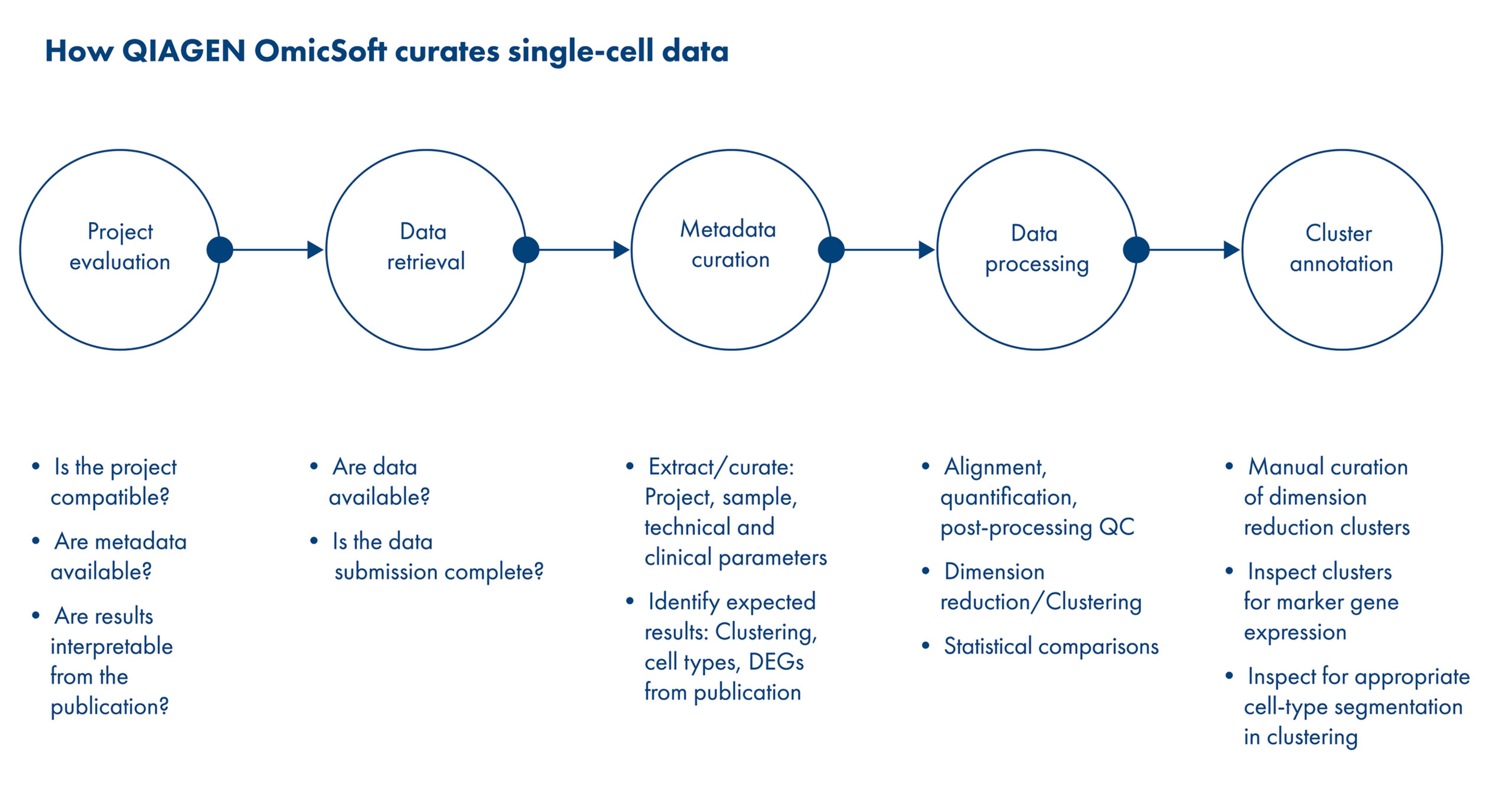

















Discover a solution that makes single-cell RNA-seq data analysis (scRNA-seq) easy while delivering deep and novel insights. Our team of certified curators manually curated hundreds of single-cell projects generating thousands of precisely-curated cell clusters. You can access millions of cells that are searchable using any one of our more than 70 metadata attributes. Compare across projects and easily find the data you are looking for to accelerate discovery and validation.
QIAGEN scientists manually curate the project, sample and cell type metadata for each dataset in Single Cell Land. This provides the level of granularity into the scRNA-seq data that is necessary to understand the biological context of the experiment. Datasets are meticulously re-processed from raw data using a unified workflow, thoroughly QC checked, then annotated for more than 70 attributes at single-cell resolution. This allows you to search for a specific cell type, tissue, gene, age, gender or any other curated trait across all projects, and quickly discover relevant datasets.

OmicSoft Single Cell Land let you explore and compare scRNA-seq data across projects in a consistent, reproducible manner. Search at the level of gene, tissue, disease, cell-type or any of the other more than 70 curated metadata attributes. The Single Cell Land framework is designed for cross-project data visualization. This allows you to explore potential biomarkers in projects that you may not have considered, letting you detect expression in new cell types, disease conditions, developmental stages or experimental states.

OmicSoft Single Cell Land gives you the tools and visualization needed to extract key insights with interactive visualizations and exportable details. You can discover dimension reduction results via tSNE or UMAP plots, expression distribution plots or violin plots, cell cluster plots, heatmaps and more. OmicSoft Single Cell Land also supports the export of single-cell data in open standard h5ad format for compatibility with external tools.

Curation is the foundation for making data FAIR (findable, accessible, interoperable, and reusable). QIAGEN has a team of over 50 Ph.D., M.S. and M.D. certified curators that follow strict protocols for curating data ensuring high-quality, dependable data. Curation standards for scRNA-seq data are consistent with QIAGEN OmicSoft OncoLand and DiseaseLand, so you can quickly refine your discoveries from bulk cell experiments to cell resolution. Manual curation down to the cell type enables you to discover datasets relevant to your research. Pre-computed comparisons between cell clusters reveal important cell-type signatures, ready for application in your experiments.

If you are a data scientist focused on ‘omics analysis, you’re probably consumed by maintaining your data lake and structuring the specific data you need. You may be frustrated by the gaps and inconsistencies in dataset metadata that cause your queries to return misleading results that could negatively impact your research.
With API access to QIAGEN OmicSoft data, you no longer must find, ingest and maintain databases that contain aggregations of public ‘omics data riddled with inconsistencies. Instead, you’ll be empowered to get right to the data analysis with queries of small or huge data slices from our unified ‘omics database. Our rigorous metadata curation approach combined with API access to structured and integrated ‘omics data allows you to perform large and complex cross-database, multi-omics queries. We also offer flat file options for ingesting the data into your own database or through our GUI designed for ‘omics visualization.
